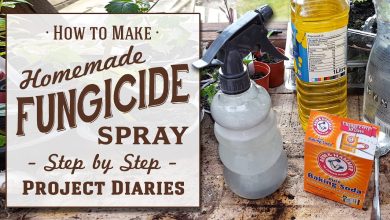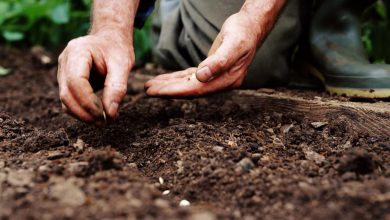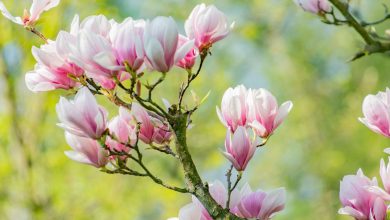Poisonous Plants: [The 30 Most Dangerous in the World]
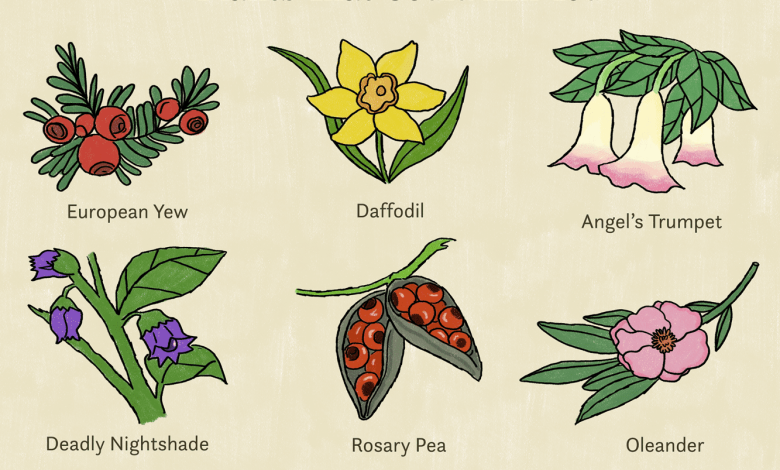
Recommendation number 1: It is very difficult to identify poisonous or toxic plants. Therefore, a priori, if you do not know the species in question, do not eat it or rub it against your skin.
Before planting a plant in your garden, find out if it can be poisonous for adults, children, pets…
Before reading this article, you should know that we are not a website with medical specialists, so in the event that you have suffered any type of condition from a poisonous plant, we strongly recommend that you see a doctor immediately.
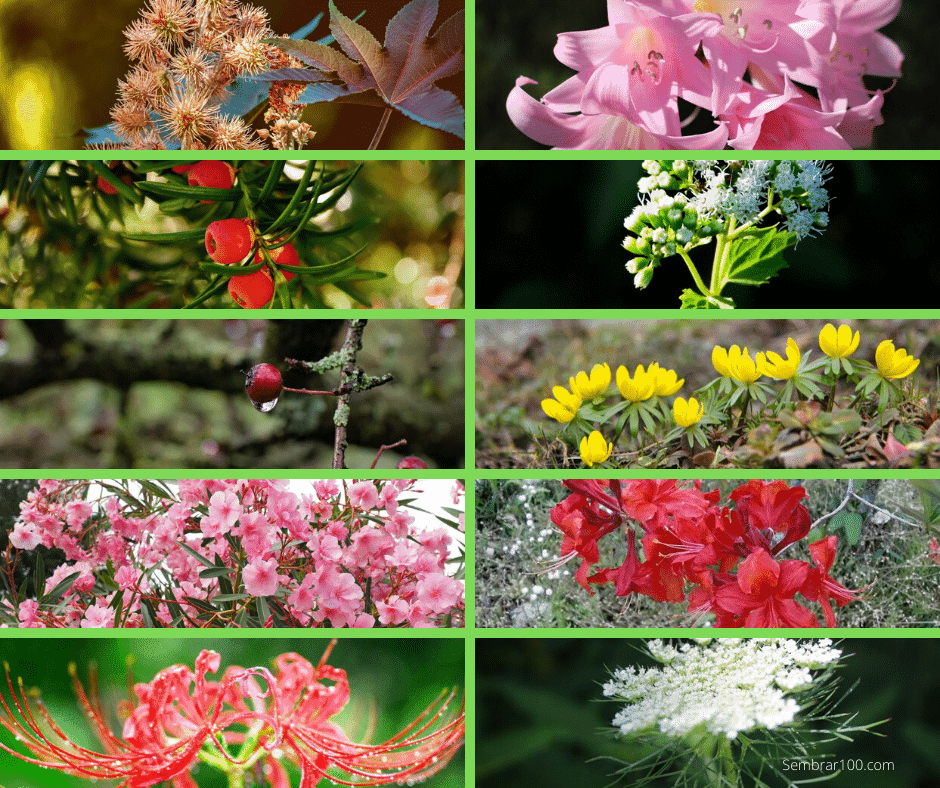
What are poisonous plants?
Although from the very origin of life on the planet,the best recommendation to avoid a scare or death.There are species that give away the opposite, because they are capable of causing a severe risk that can even lead to the death of those who come across these species.
Did you know…Sometimes, they can be very, very dangerous for a person, but not for animals such as some birds, which are capable of consuming some poisonous seeds without suffering any damage.
Plants such as elderberry, saffron and citissus cause intoxications similar to hemlock, once the most poisonous in the world, but without reaching its lethal damage.
Ivy, if chewed by a child or given as an infusion of leaves,causes serious digestive disorders, excruciating headaches and backaches,as well as sleep and seizures with increased body temperature.
Why are some plants poisonous?
Although in defense of plants, it is important to clarify that only world statistics show that only 5% of all cases of poisoning are affected by the ingestion of some part of these dreaded species.
 Sometimes it is also true that the case may possibly be misdiagnosed, either because the symptoms were evident hours later and it was not possible to relate the effect or consequence that the toxins that contain many species leave on humans.
Sometimes it is also true that the case may possibly be misdiagnosed, either because the symptoms were evident hours later and it was not possible to relate the effect or consequence that the toxins that contain many species leave on humans.
many are poisonousbecause they need to defend themselves from their predators or destroyers,so thatit is highly recommended not to allow small childrenthey put a piece in their mouths, on a rural or country walk, especially when they are in the orality stage and they put everything they get in their mouths.
The evolution of species, especially herbivorous animals, has allowed them to learn to differentiate which plants they must ingest to cleanse their body and also which are mortal and untouchable.
However, there is everything, because some poisonous plants do not affect some mammals at all, but others are lethal and their danger extends to human beings.
In Spain, as of May 2004, a law came into force that includes a list of197 species of plants whose sale to the public,It is prohibited due to its high toxicity.
What are the most poisonous plants in the world?
The ranking or top-ten of the 10 most poisonous plants in the world, supported by botanical experts in the world, are:
- Oleander (Nerium oleander)
- Hemlock (Cicuta matulata)
- American licorice (A brus precatorius)
- Belladonna (Atropa belladonna)
- Hellish or castor fig tree ( Ricinus communis)
- Common yew or black yew ( Taxus baccata)
- Ageratin altissima
- Common monkshood ( Aconitum napellus)
- Jimson weed (Datura stramonium)
- Manchineel of death (Hippomane mancinella)
Oleander (Nerium oleander)
The oleander takes the top prize asthe most poisonous plant on the planet.It has so much poison that even the honey in its nectar can kill a person without the slightest remorse.
The symptoms of its voracious attack are: vomiting and diarrhoea, unbearable stomach pains, sleep or drowsiness and dizziness, tachycardia or irregular heartbeat until death, due to various toxins, but there is one, oleandrine, capable of acting on the heart to stop.
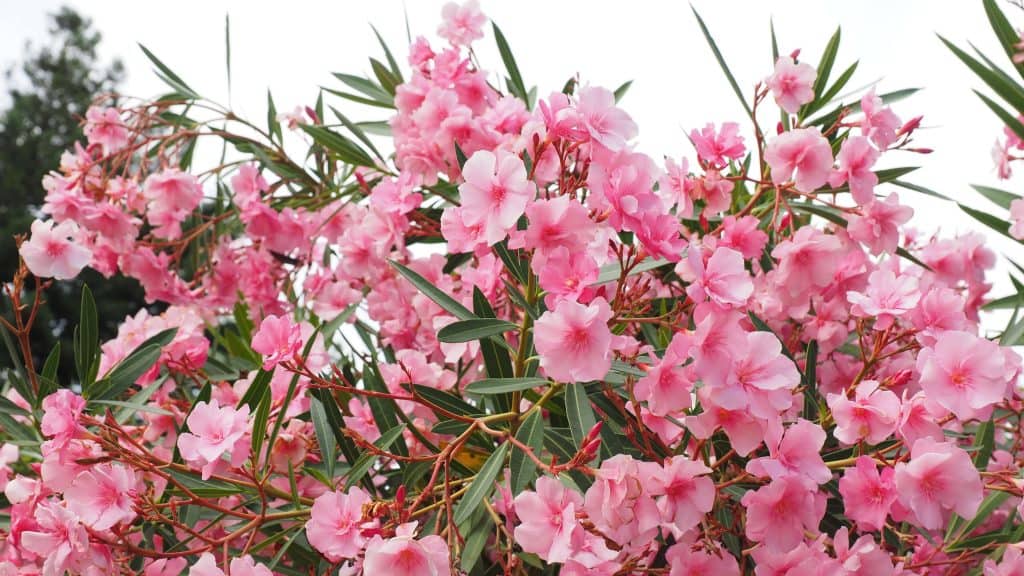
Hemlock (Cicuta matulata)
Of the entire American continent, Hemlock is the most powerful in poison.
It kills after causing severe, very painful and violent convulsions, vomiting, muscle tremors and cramps. If there is survival, the victim will go through long periods of amnesia, so it is better not to go near him.
The toxin that is concentrated mostly in its roots is called cicutoxin and it does not play when it comes to acting.
You can find it especially in North America.
Did you know…Did the philosopher Socrates take his life by ingesting hemlock?
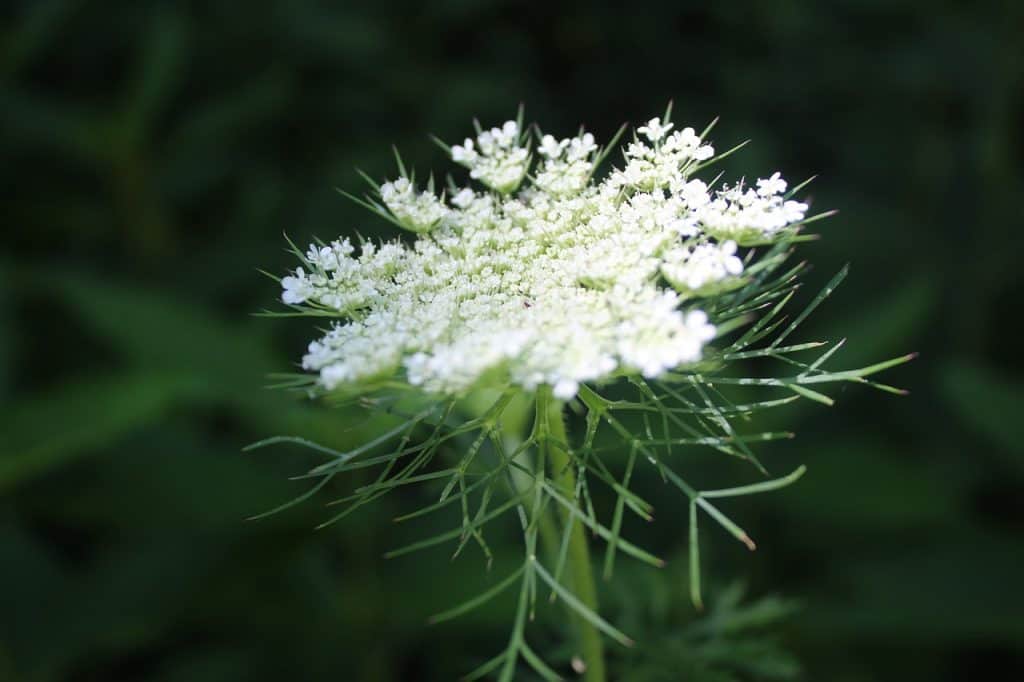
American licorice (A brus precatorius)
It has some very striking seeds that have been used in jewelry and in the making of rosaries, but wow…! of the person who manages to inhale one of these seeds if it were to break: the poison is so powerful that it prevents the synthesis of proteins in the organism of its victim, which is fatal.
when inhaledVomiting, fever and above all, a lot of respiratory difficulty occurbecause the lungs fill with fluid. But if it is ingested, it is necessary to add to this already difficult symptomatology an atrophy in the kidneys, liver and spleen that leads to death in a few days.
This deadly plant is native to Indonesia, but spreads to tropical and subtropical climates around the world, soit is better to respect it and identify its rounded red seeds and black spots very well.
The abrin toxin, which lodges in the seed, is capable of killing an adult with as little as 3mg. 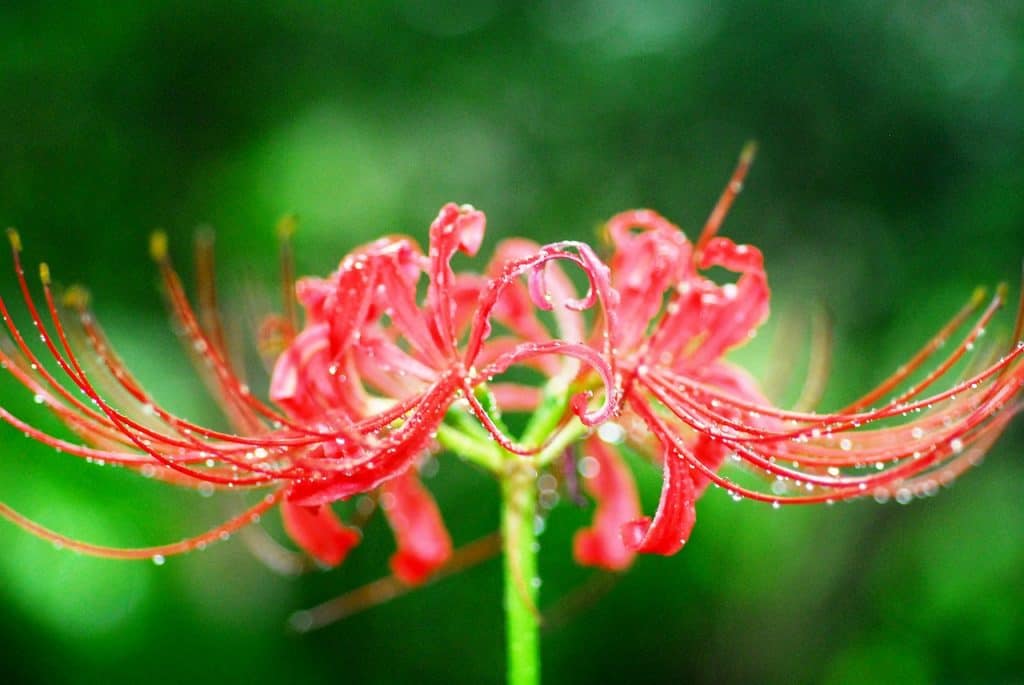
Belladonna (Atropa belladonna)
Native to European forests, with an expansive presence in North Africa, West Asia and North America, belladonna has a powerful poison that affects the human nervous system.
It paralyzes nerve endings of the involuntary muscles of the body, blood vessels, heart and gastrointestinal muscles, as a result of the ingestion of toxins such as atropine and scopolamine, present in its stems, leaves, berries and roots.
To get an idea of its damaging power,with as few as 10 or 20 berries they have enough poison to kill an adult person.
Immediate help should be sought if the following symptoms arise from poor contact with this plant:sensitivity to light with dilated pupils or blurred vision, severe headaches, confusion, and seizures.
Inhalation of its toxins also triggers shortness of breath, nausea, fever and vomiting, triggering fluid in the lungs, with kidney damage and equally serious damage to organs such as the liver and spleen, with the affected person dying in just 3 or 4 days.
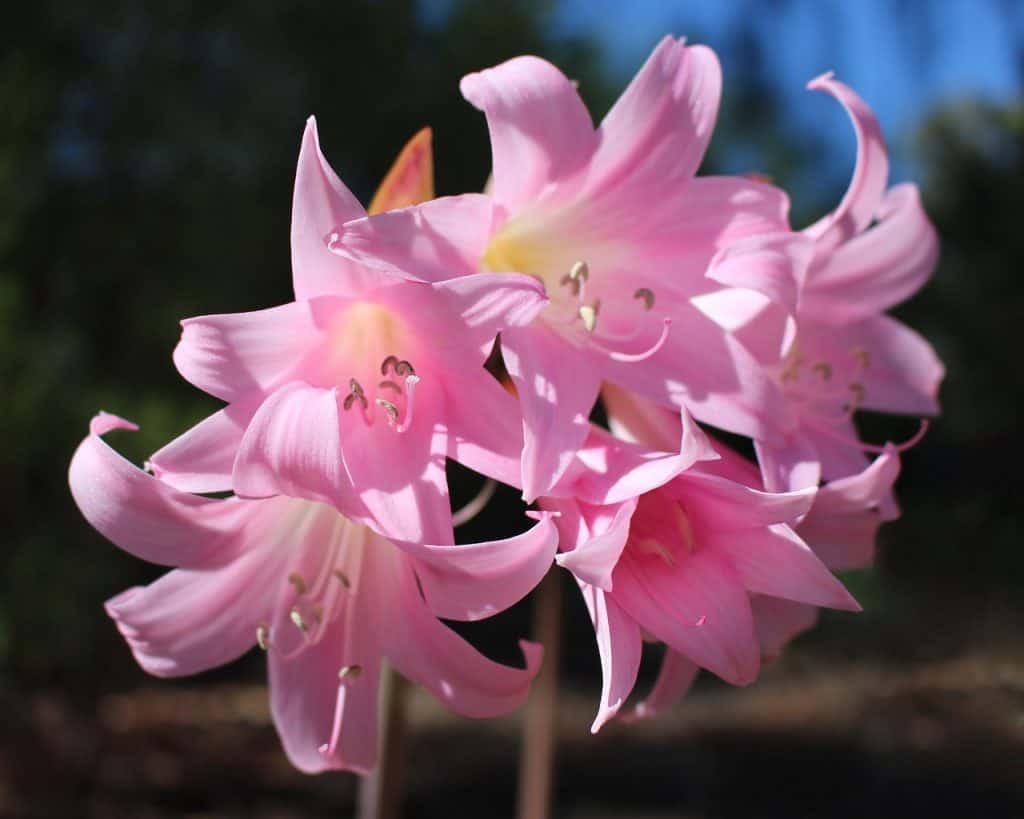
Hellish or castor fig tree (Ricinus communis)
Famous forcastor oil,obtained from the processing of its seeds and that has uses as dissimilar as its laxative action, or its use in the manufacture of paints, lubricants and brake fluids.
Its leaves can acquire adark red or purple hue covered with a white powder, ricin, highly toxic.If we come into contact with ricin, vomiting, abdominal cramps and, in the worst cases, internal bleeding and kidney failure that lead to death will be triggered.
Ricin interferes with human metabolism, becauseit blocks the internal chemical processes that keep cells alive, vital.Five full castor beans will suffice to kill an adult and one to kill a child.
It is native to the African continent, but has already spread throughout the world.
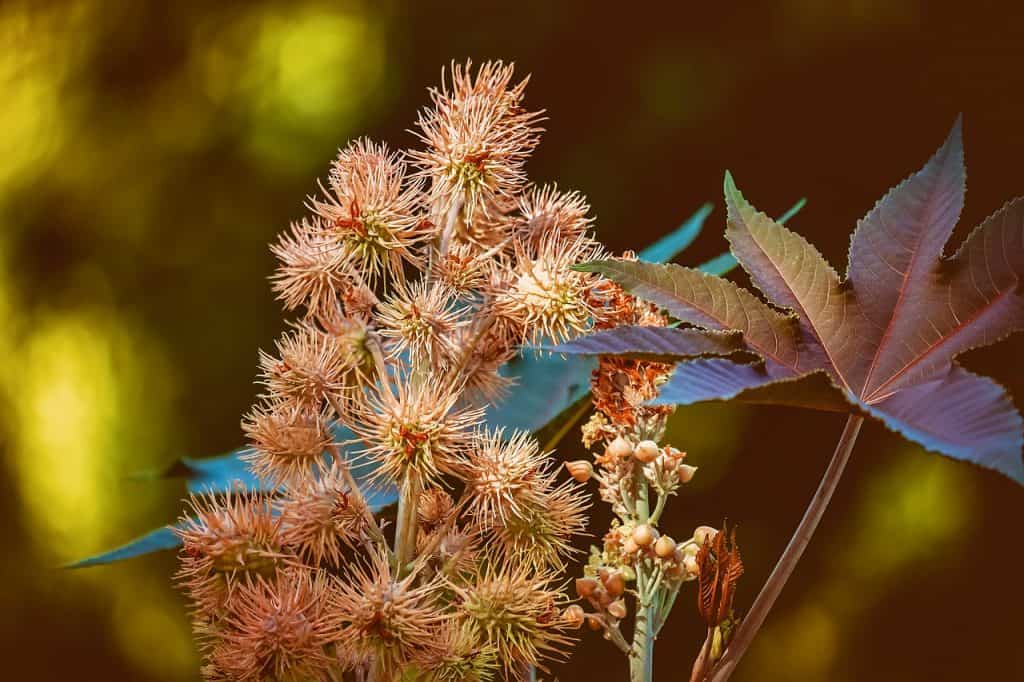
Common yew or black yew (Taxus baccata)
Throughout history, this plant, native to the UK, has had quite a few useful applications, despite its poisonous status. Yew extract has been used in the manufacture of a drug, paclitaxol , which slows ovarian, breast, and lung cancer.
The symptoms of poisoning with common or black yew are: dizziness, dry mouth, dilated pupils, extreme weakness, irregular heartbeat, thanks to the consumption of leaves and, to a lesser extent, seeds, which contain taxin, a very toxic alkaloid that can kill..
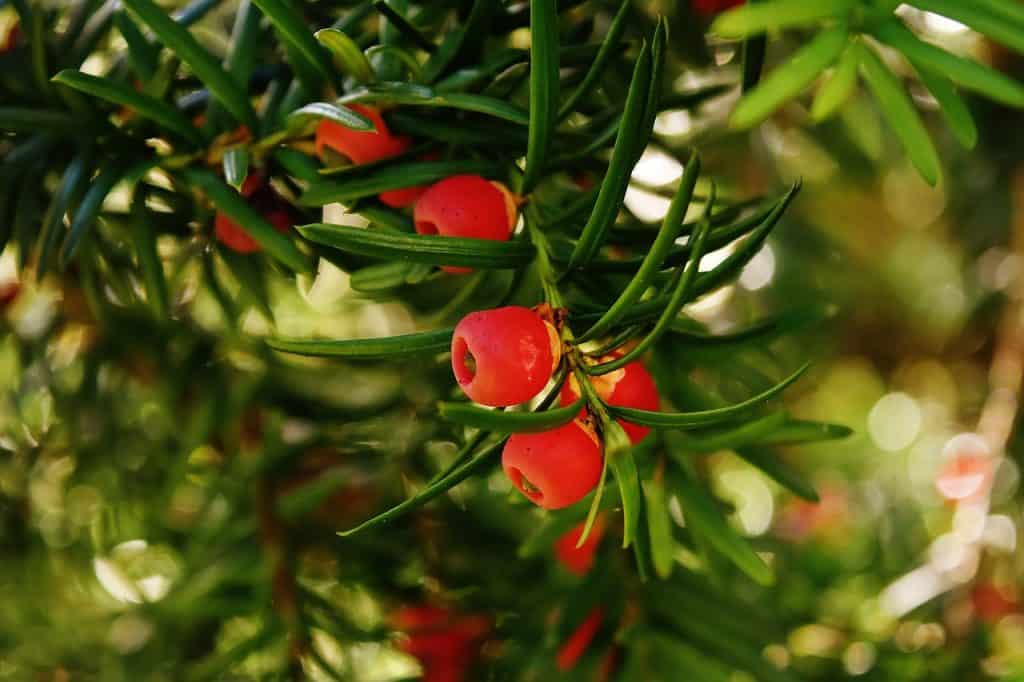
Ageratin altissima
It was famous at the beginning of the 20th century, because the so-called «milk disease» was attributed to it, which affected people who consumed milk from a cow that ate this poisonous plant.
Consumption is deadly because it contains the toxin tremetol, whichcauses bad breath with loss of appetite, body weakness, muscle stiffness, severe constipation, vomiting, stomach cramps and furthercoma until the death of the victim.
This plant is born and reproduces in North America.
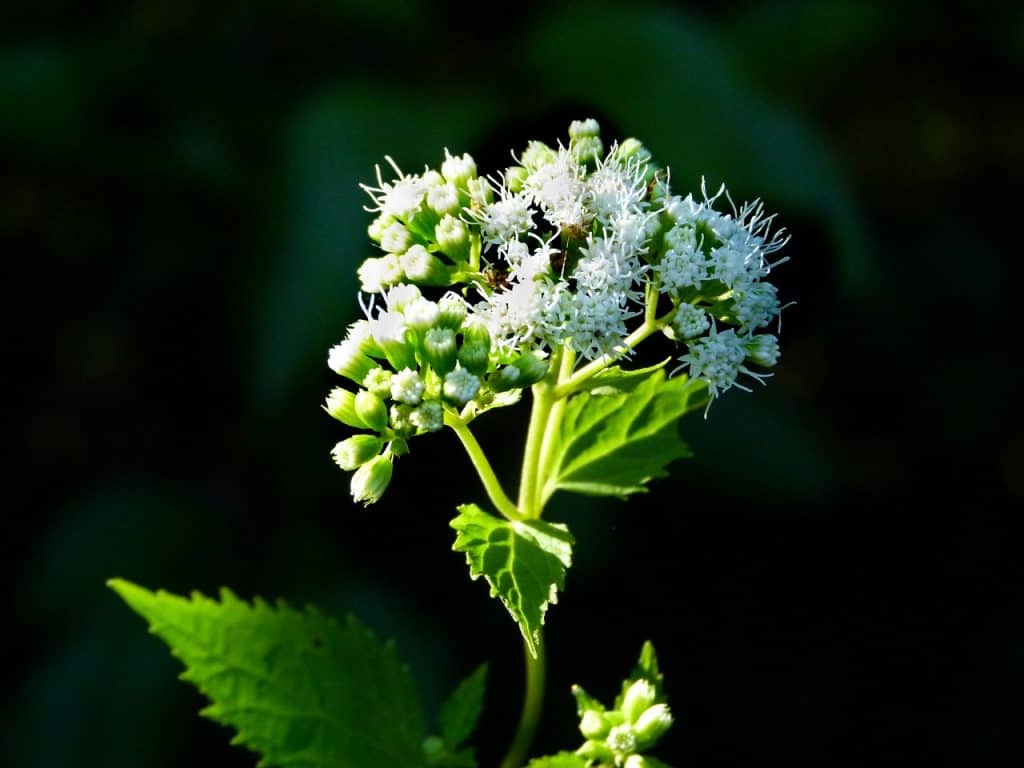
Common monkshood (Aconitum napellus)
Did you know…In Nazi Germany they used it to poison bullets and in ancient Greece shepherds greased their arrows to kill wolves that attacked their sheep. So it is not easy, tripping over a Common Aconite, because without any exaggeration, just touching it can be dangerous.
The symptoms of poisoning caused by this poisonous plant are: burns in the mouth, copious salivation, vomiting and diarrhea, cardiac arrhythmia, coma and later death, caused by the action of the toxin aconitine, so powerful that just 1mg is enough to kill a person weighing 80 kgs.
It lives in the European mountains.
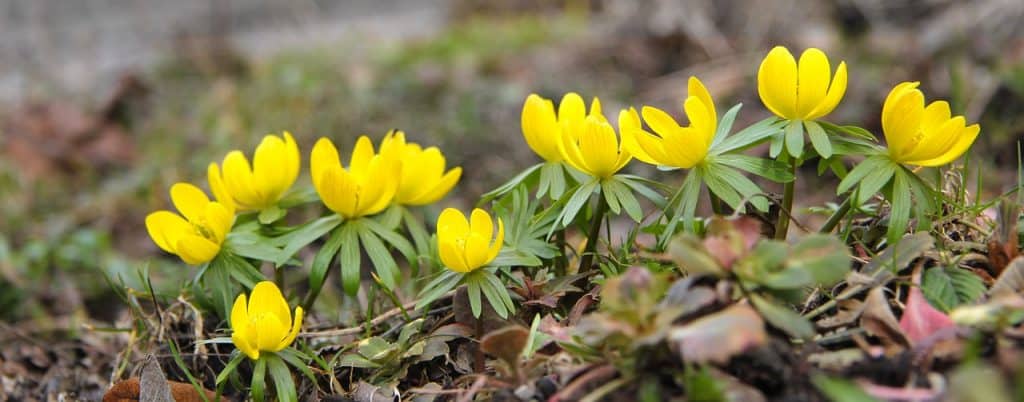
Jimson weed (Datura stramonium)
This poisonous American plant is found in the United States, Canada, and the Caribbean.
Did you know…At the time of the so-called Spanish Conquest, the conquerors had the idea of eating it and as they suffered hallucinations, cardiac arrhythmia, delirium and aggressive behavior until reaching a comatose state, before death, magical powers associated with black magic were attributed to it, thanks to its hallucinogenic properties.
It has the power of two deadly toxins:atropine and scopolamine.
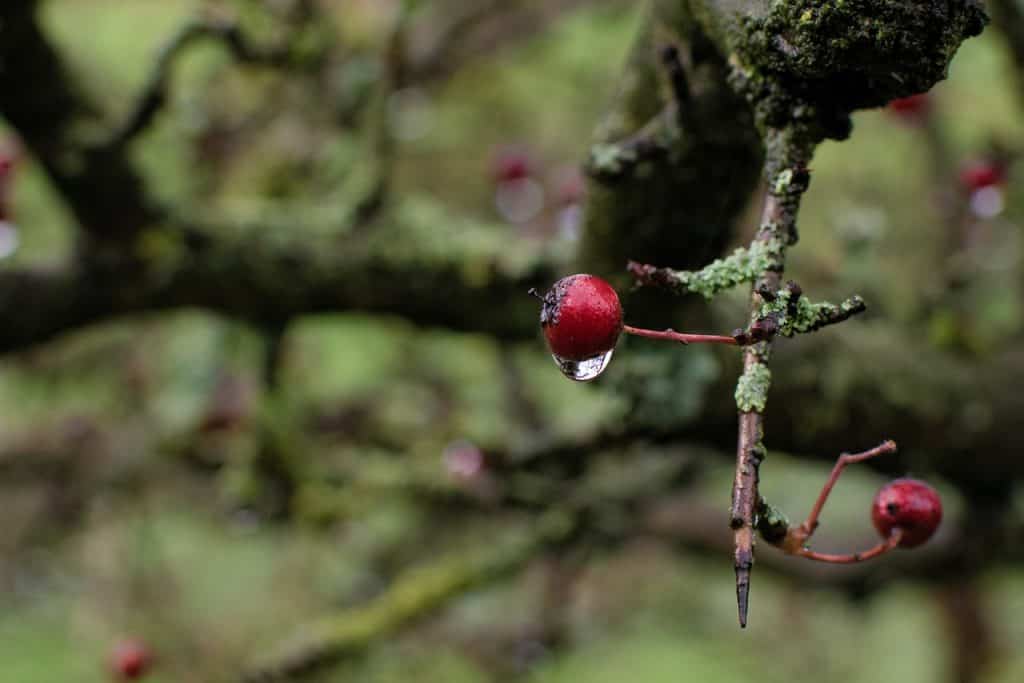
Manchineel of death (Hippomane Mancinella)
It is such a poisonous plant thatjust inhaling its smokeor sawdust, generates a severe cough, laryngitis and even bronchitis.
If a person comes into contactcauses blisters, burns, and swellingand if you rub your eyes impregnated with the poison you can lose your vision.
And if ingested, it will cause severe problems in the throat and in the gastrointestinal system, due to the action of 2 toxins: hypomanes A and B, present throughout the tree.
It is found in Central America and the Caribbean.
Mandrake
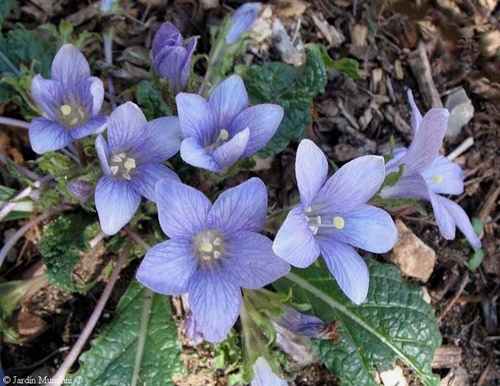
>The mandrake (Mandragora autumnalis) was one of the most used plants in witchcraft or magical rituals during the Middle Ages.
It was believed that she could seize the soul of whoever approached her and that whoever ripped her off the ground would go crazy when hearing her screams. It is very rich in atropine alkaloids such as atropine and scopolamine, which make it very toxic and dangerous.
These alkaloids used separately in low doses are well known by modern medicine, but in ancient times it was not possible to separate them and their toxic effects added up, even causing death to those who consumed their leaves, fruits or roots.
Already in the time of Pliny the Elder, some 2,000 years ago, in Rome’s military campaign against the Germans, surgeons gave wounded men a piece of mandrake root to chew to stun them before operating on them or amputating a limb, since it has a strong anesthetic effect.
The truth is that it has active ingredients with hallucinogenic action and at a certain dose it is very harmful.
abrus precatorius
Commonly known as jequirity, crab eye, rosary pea, ‘John Crow’ bead, precatory bean, Indian liquorice, saga akar, giddee giddee, bead jumbie, ruti, and weather plant.
The attractive seeds (usually the size of a ladybug, bright red with a black dot) contain abrin, an extremely toxic ribosome-inactivating protein related to ricin.
Symptoms of poisoning include nausea, vomiting, seizures, liver failure, and death, usually after several days. Ingestion of a single seed can kill an adult human being.
The seeds have been used as beads in jewelry, which is dangerous; inhaled dust is toxic and punctures can be fatal. Unfortunately, the seeds are attractive to children, so be very careful!
Aconitum
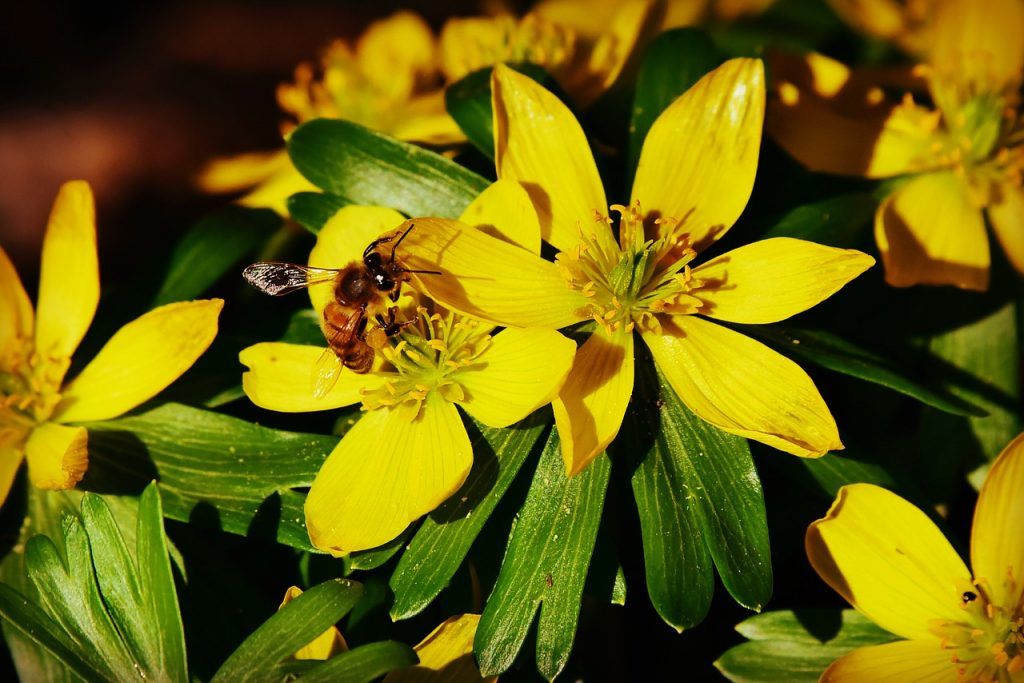
Various species commonly called aconite.
All parts are poisonous, as they contain an alkaloid called aconitine, which disables nerves, lowers blood pressure, and can stop the heart. Even casual skin contact should be avoided. Symptoms include numbness, tingling, and heart irregularities.
It has been used as a bullet poison (by German forces during World War II), as a bait and arrow poison (in ancient Greece), and to poison water supplies (reportedly from ancient Asia).
If ingested, it often causes burning, tingling, and numbness in the mouth, followed by vomiting and nervous excitement.
It is usually a fast-acting poison and has been used in the past to kill wolves (hence one of its common names).
Actaea pachypoda
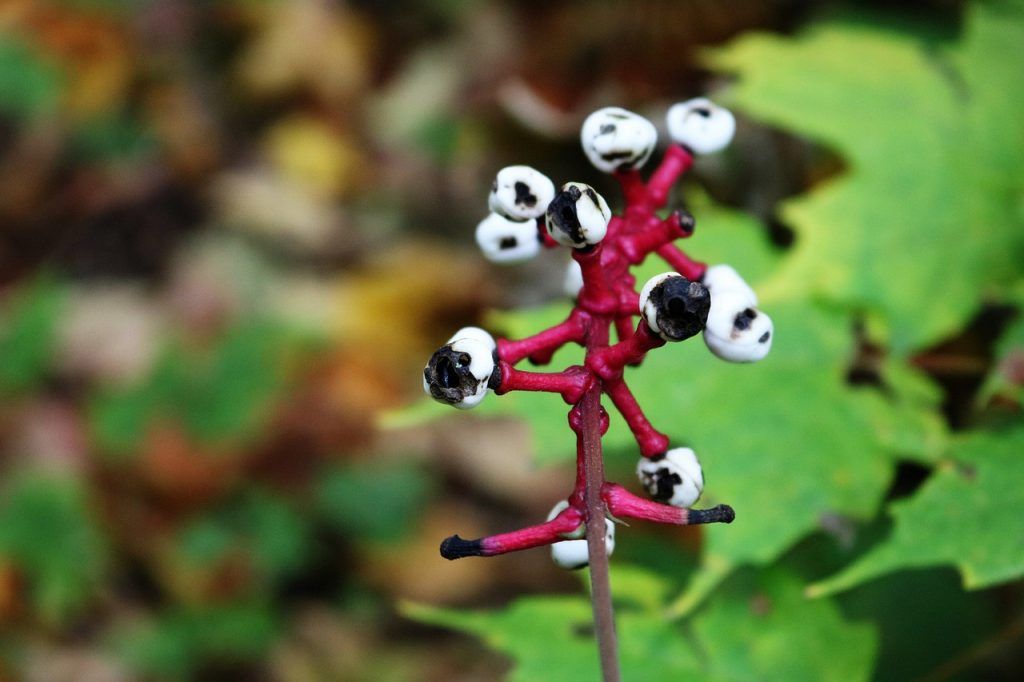
It is also known as doll’s eyes or white baneberry.
All parts are poisonous, especially the berries, the consumption of which has a sedative effect on cardiac muscle tissue and can lead to cardiac arrest.
Adenium obesum
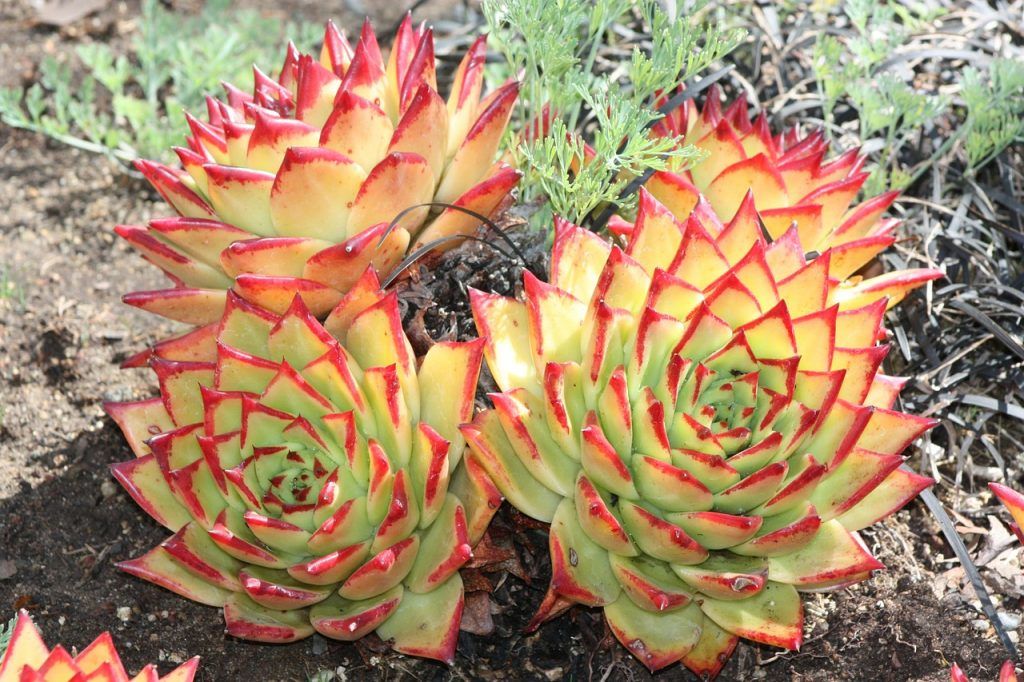
Also known as star sabi, kudu, or desert rose. The plant exudes a highly toxic sap that is used by the Meridian High and the Hadza in Tanzania to coat arrowheads for hunting.
Poppy
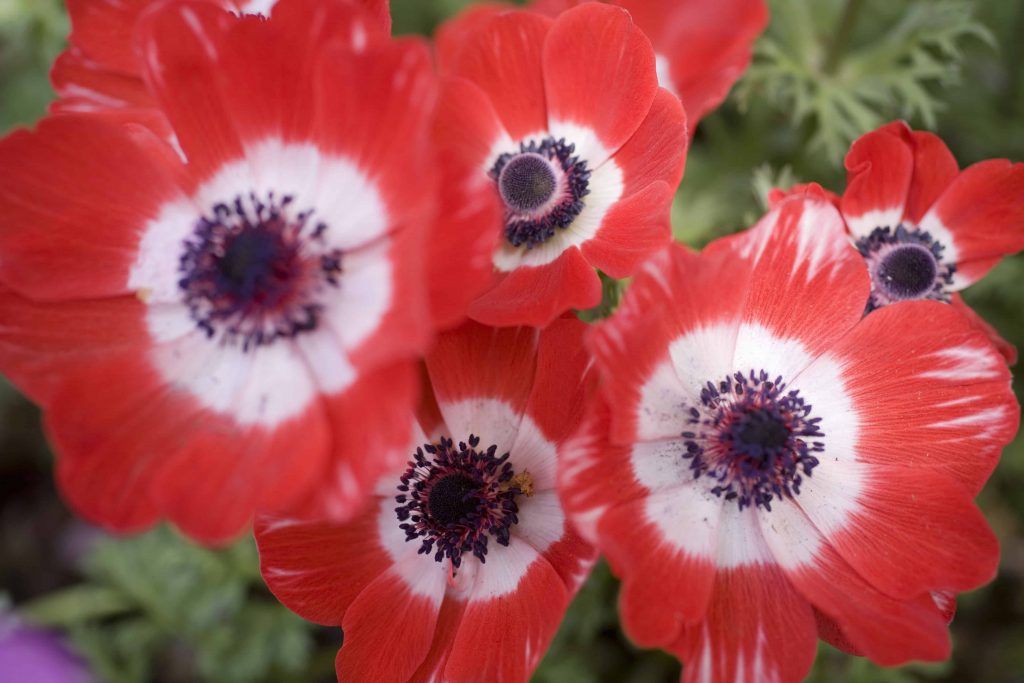
La adormidera es una planta herbácea que puede llegar a medir más de un metro de altura con grandes flores de hasta 15 cm de ancho. No sólo nos gustan a nosotros sus características flores rojas, sino también a las abejas.
Después de la Primera Guerra Mundial, las flores de amapola empezaron a crecer por todas partes. Esto se debe a que los campos eran estériles a consecuencia de la guerra, pero luego se enriquecieron con la cal de los escombros, proporcionando un suelo rico para que florecieran las amapolas.
Es importante señalar que la mayoría de las flores de amapola son venenosas en cierto grado. Esta especie contiene compuestos alcaloides que son venenosos tanto para los humanos como para los animales domésticos. No hay que masticar ninguna parte de la planta.
Si cultivas adormideras para uso culinario, la amapola del opio es una buena opción. Las semillas se pueden consumir y se utilizan para añadir sabor, crujido y mordacidad a los panes y pasteles.
Ten cuidado, ya que las semillas de muchas otras especies de amapolas no son comestibles. Además, no debes consumir ninguna otra parte de la planta de amapola: son venenosas.
Adonis vernalis
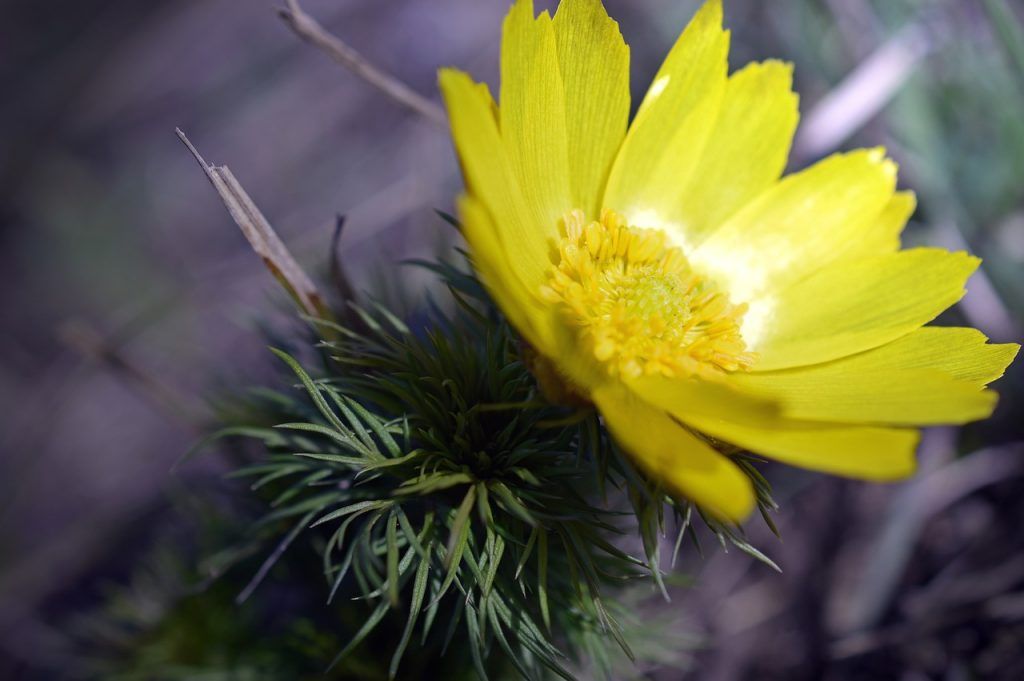
Known as pheasant’s eye or false hellebore. The plant is poisonous, since it contains cardiostimulant compounds such as adonidine and aconitic acid[citation needed] Adonis vernalis sl10.jpg
Aesculus hippocastanum
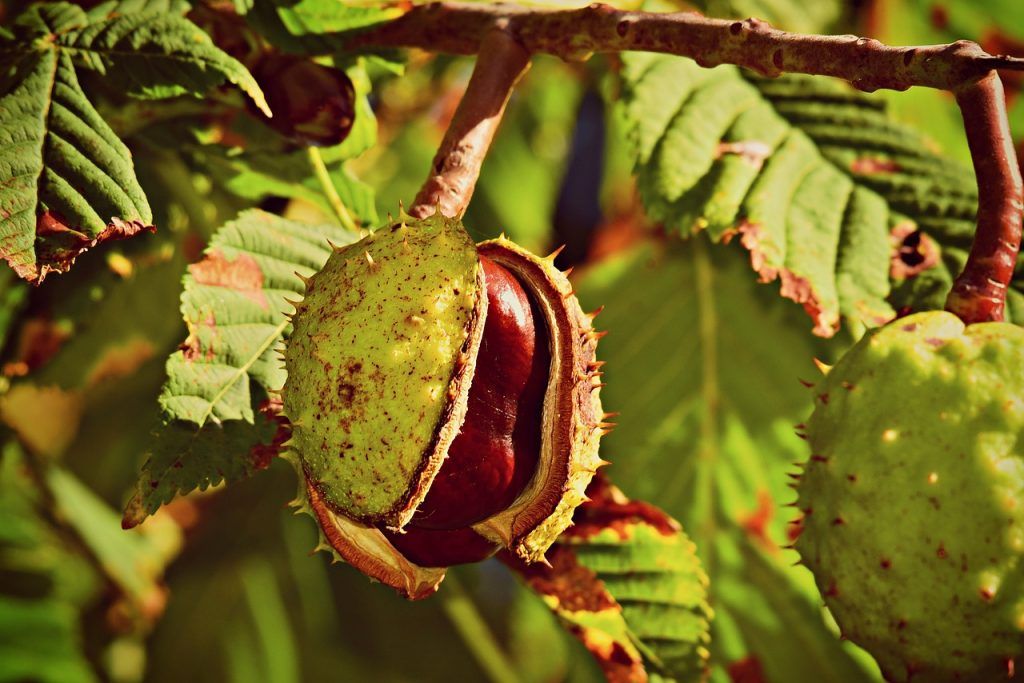
Commonly known as horse chestnut.
All parts of the plant are poisonous, causing nausea, muscle spasms, and sometimes paralysis. Kastan 1.jpg
Agave
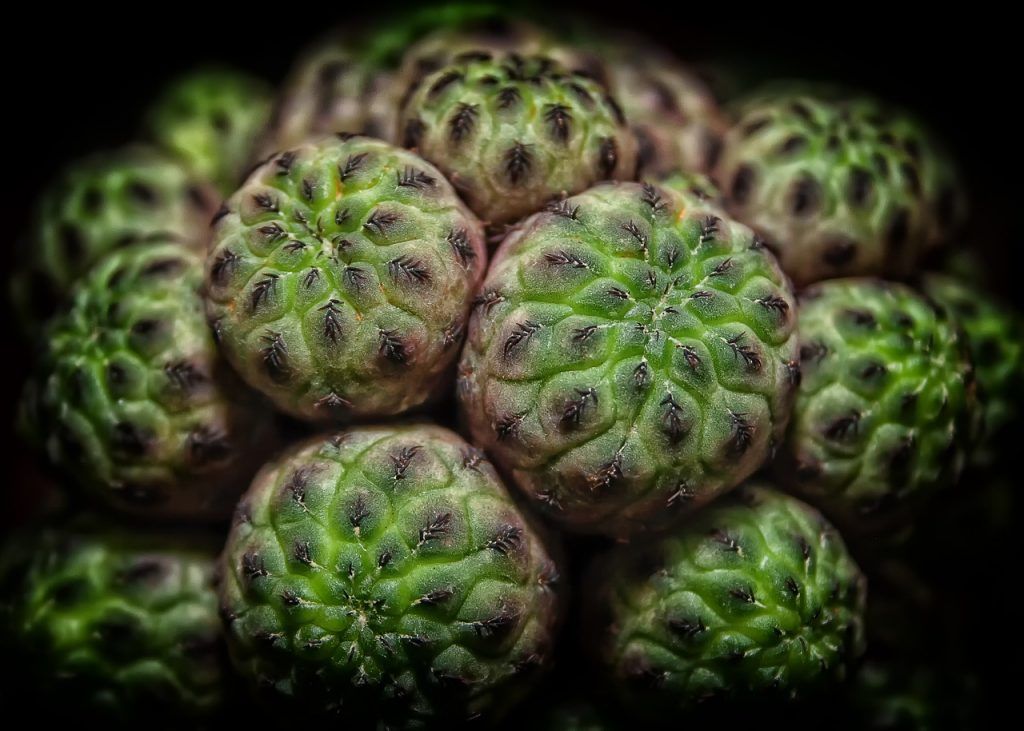
Also known as century plant and maguey, agave juice of various species causes acute contact dermatitis, with blisters lasting several weeks and recurring itching for several years thereafter.
Ageratin altissima
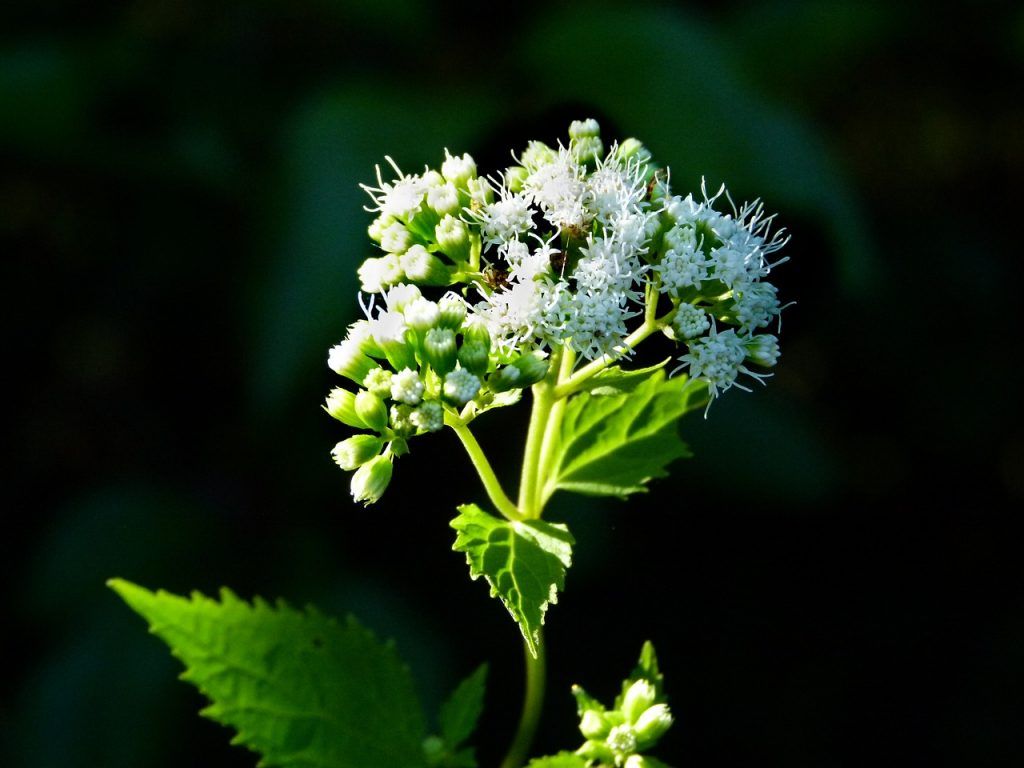
Commonly known as white cherimoya.
All of its parts contain a toxic oil known as tremetol, which causes nausea and vomiting and is often fatal.
Milk sickness is caused by the consumption of milk from cattle that have eaten white ageratin, which can sicken or kill humans.
Agrostemma Githago

Commonly known as corn cockles. Contains githagin saponins and agrostemmic acid.
All parts of the plant are poisonous and can cause potentially fatal chronic or acute poisoning, although it has been used in folk medicine to treat a range of ailments, from parasites to cancer.
No recent clinical studies on corn cockles are known to support dosage recommendations; however, doses greater than 3 g (from seeds) are considered toxic.
anemone nemorosa
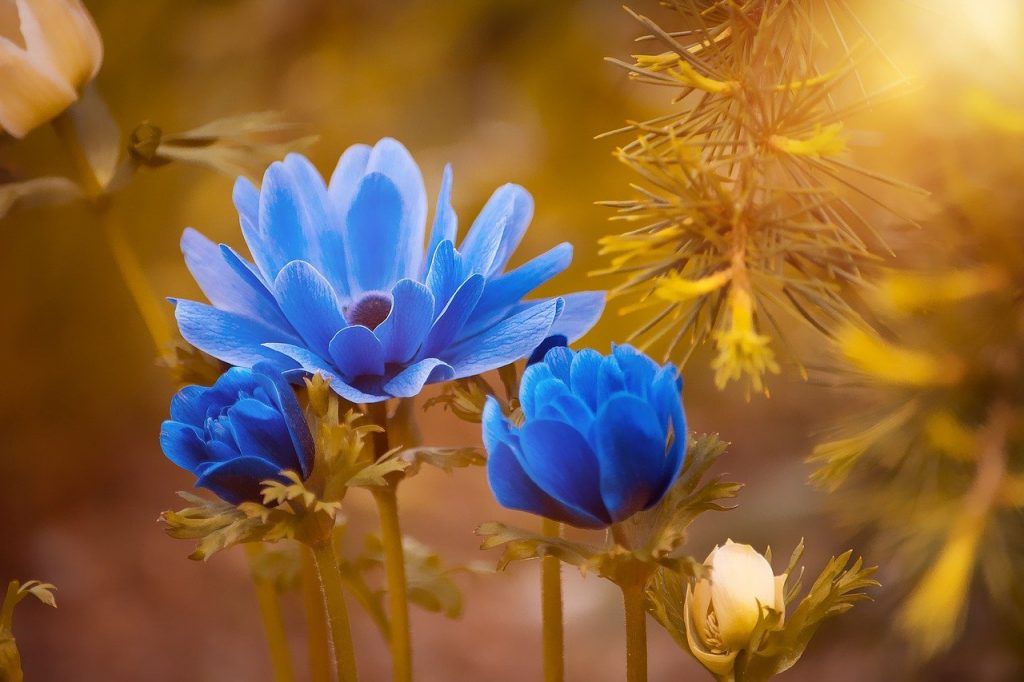
This poisonous plant is known as wood anemone, windflower, and thimbleweed.
The plant contains chemicals that are toxic to animals, including humans, but has also been used as a medicine.
All parts of the plant contain protoanemonin, which can cause severe skin and gastrointestinal irritation, bitter taste and burning in the mouth and throat, mouth ulcers, nausea, vomiting, diarrhea, and hematemesis.
anthurium
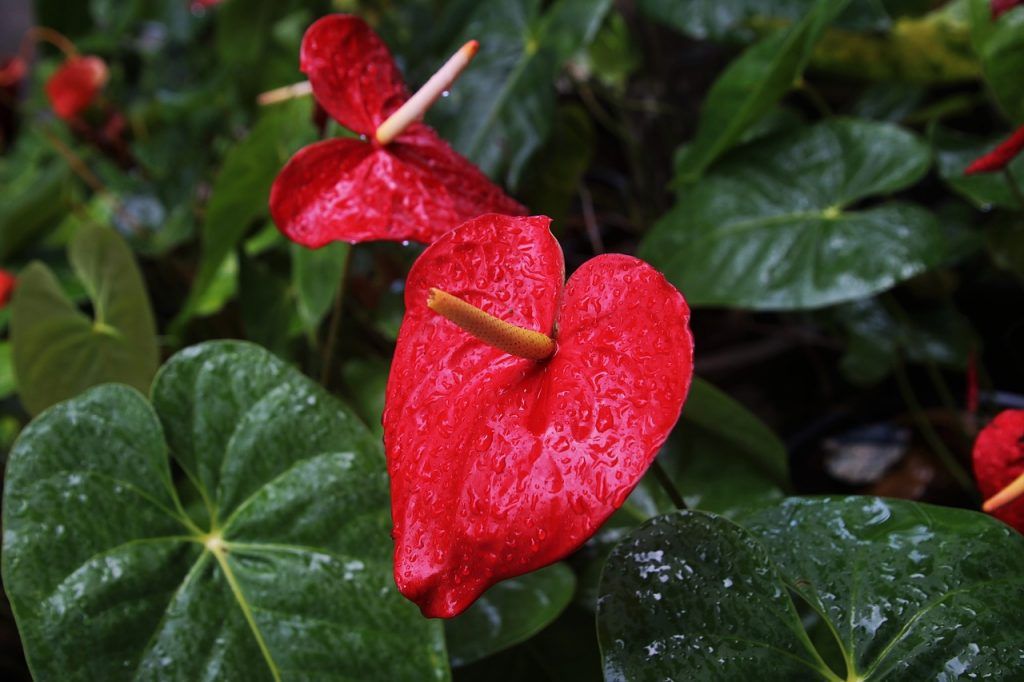
Common names include anthurium, cola flower, and flamingo flower.
Anthurium plants are poisonous due to calcium oxalate crystals. The sap irritates the skin and eyes.
Aquilegia
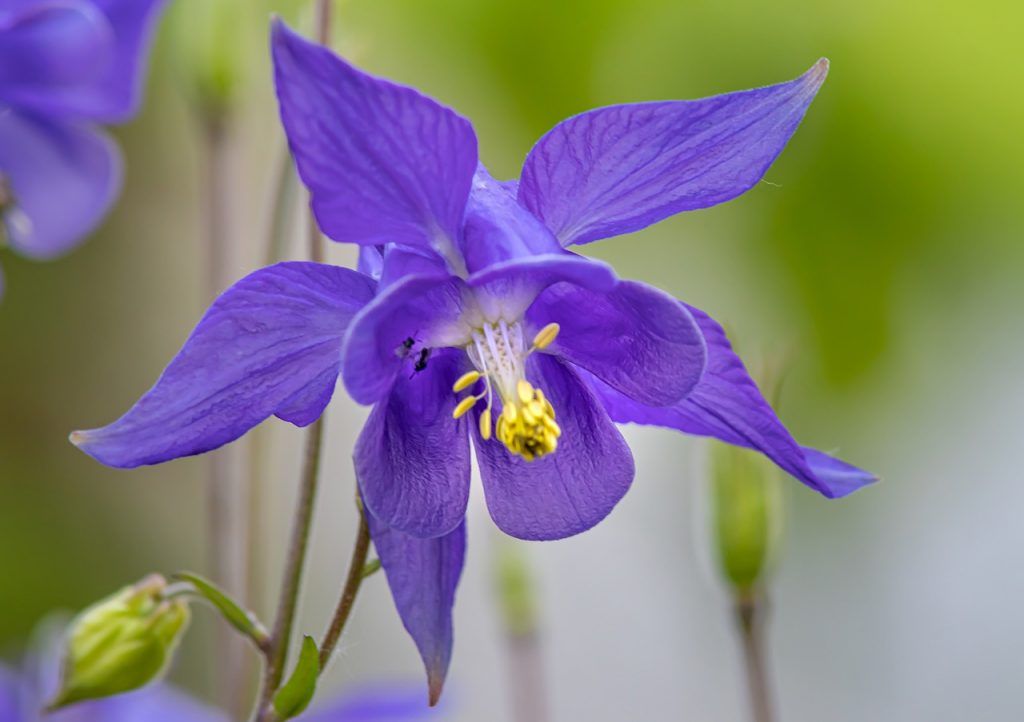
Many species commonly known as columbine. The seeds and roots contain cardiogenic toxins that cause both severe gastroenteritis and heart rhythm disturbances, if consumed.
The flowers of various species were eaten sparingly by Native Americans as a condiment with other fresh vegetables, and are said to be very sweet and safe if eaten in small amounts.
Native Americans also used very small amounts of the root of this toxic plant as an effective treatment for peptic ulcers.
However, the medical use of this plant is difficult due to its high toxicity; columbine poisonings are easily fatal.
Areca catechu or Betel nut
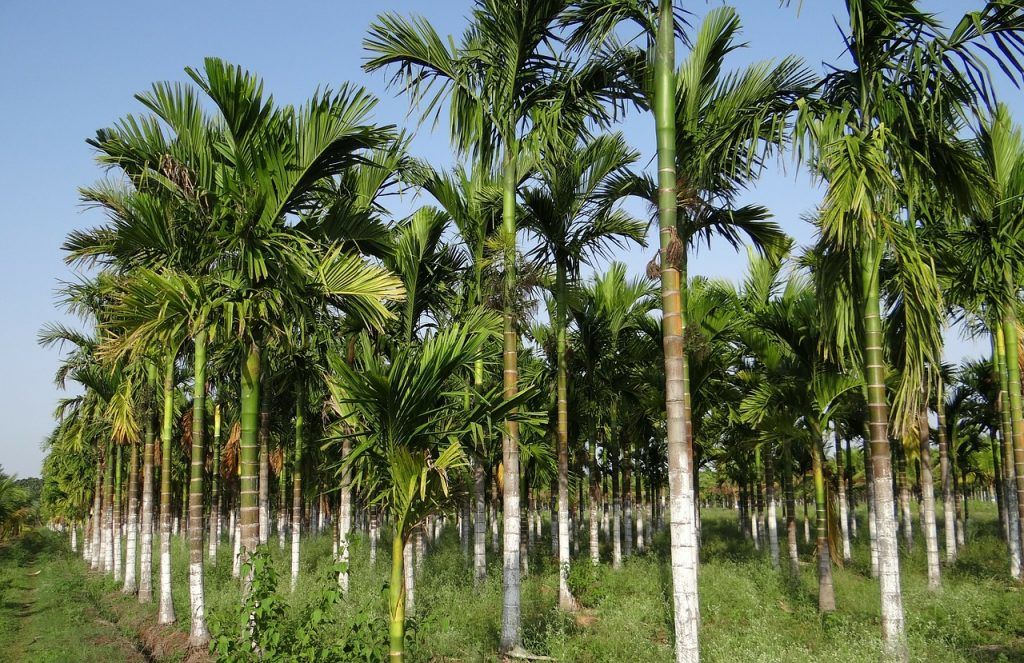
It is a poisonous plant commonly known as betel nut palm and pinyang. The nut contains arecoline, an alkaloid related to nicotine that is addictive.
It produces a slight high, some stimulation and a lot of red saliva, which cannot be swallowed because it causes nausea.
Withdrawal causes headache and sweating. Its consumption is related to oral cancer and, to a lesser extent, with asthma and heart disease.
mexican argemone
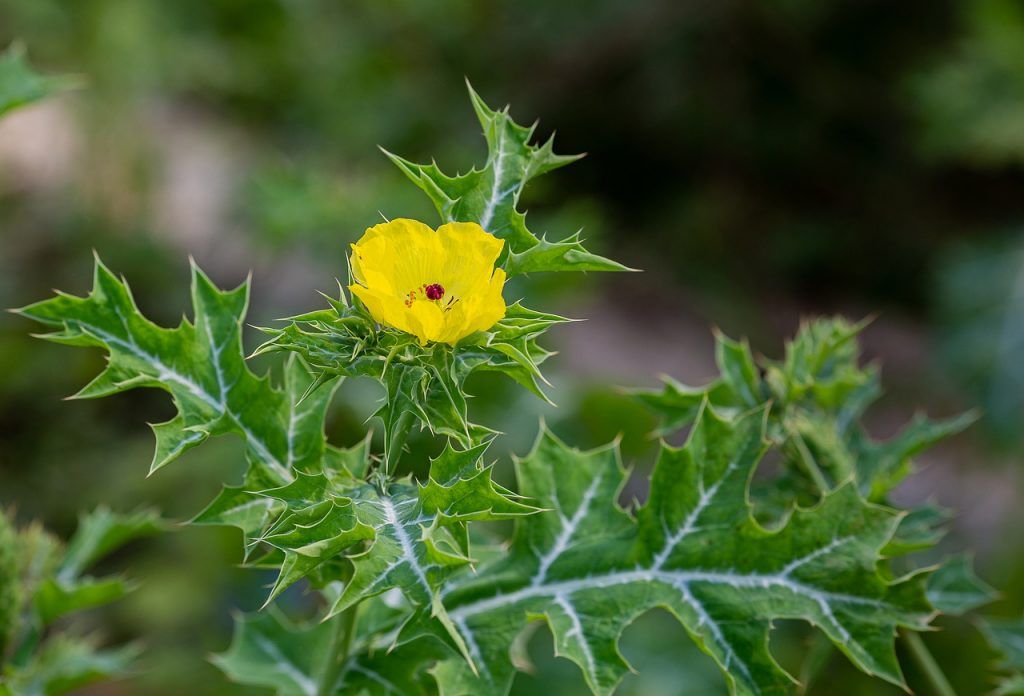
Los nombres comunes incluyen amapola mexicana, cardo florido, cardo y cardosanto.
Las semillas de Argemone mexicana contienen entre un 22 y un 36% de un aceite no comestible de color amarillo pálido llamado aceite de argemone o aceite de katkar, que contiene los alcaloides tóxicos sanguinarina y dihidro-sanguinarina.
La intoxicación por aceite de katkar provoca una hidropesía epidémica, cuyos síntomas incluyen una hinchazón extrema, sobre todo de las piernas.
Arnica montana
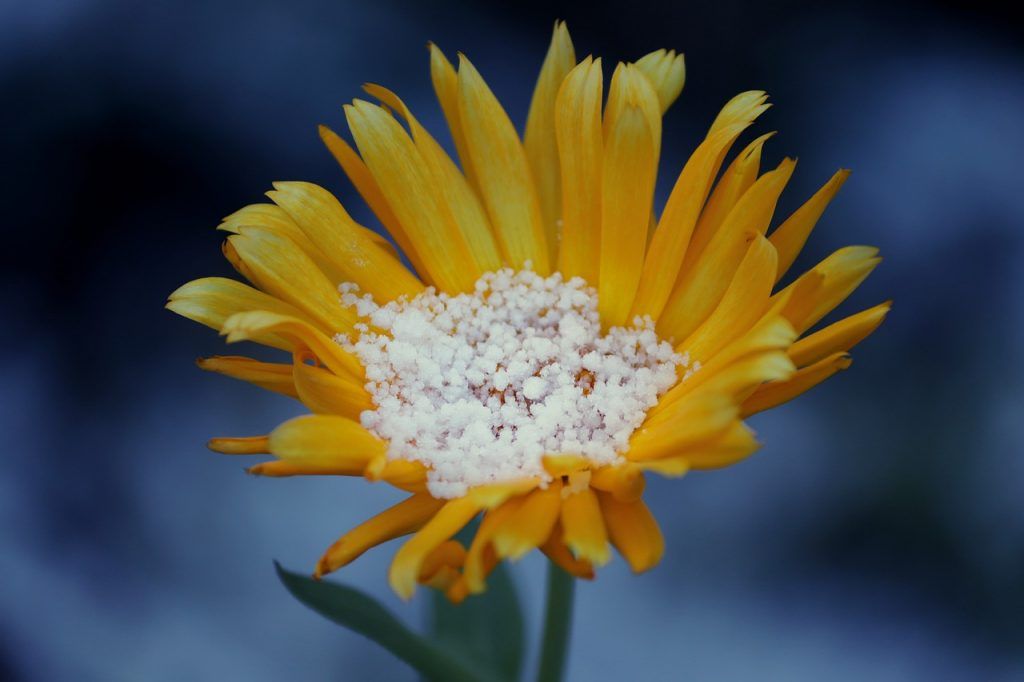
También conocida como árnica de montaña. Contiene la toxina helenalina, que puede ser venenosa si se comen grandes cantidades de la planta o se utilizan pequeñas cantidades de árnica concentrada.
El consumo de Arnica montana puede producir gastroenteritis grave, hemorragia interna del tracto digestivo, aumento de las enzimas hepáticas (que puede indicar inflamación del hígado), nerviosismo, aceleración del ritmo cardíaco, debilidad muscular y la muerte si se ingiere una cantidad suficiente.
El contacto con la planta también puede causar irritación de la piel.
En la prueba de Ames, un extracto de Arnica montana resultó ser mutagénico.
Advertisements
Arum maculatum
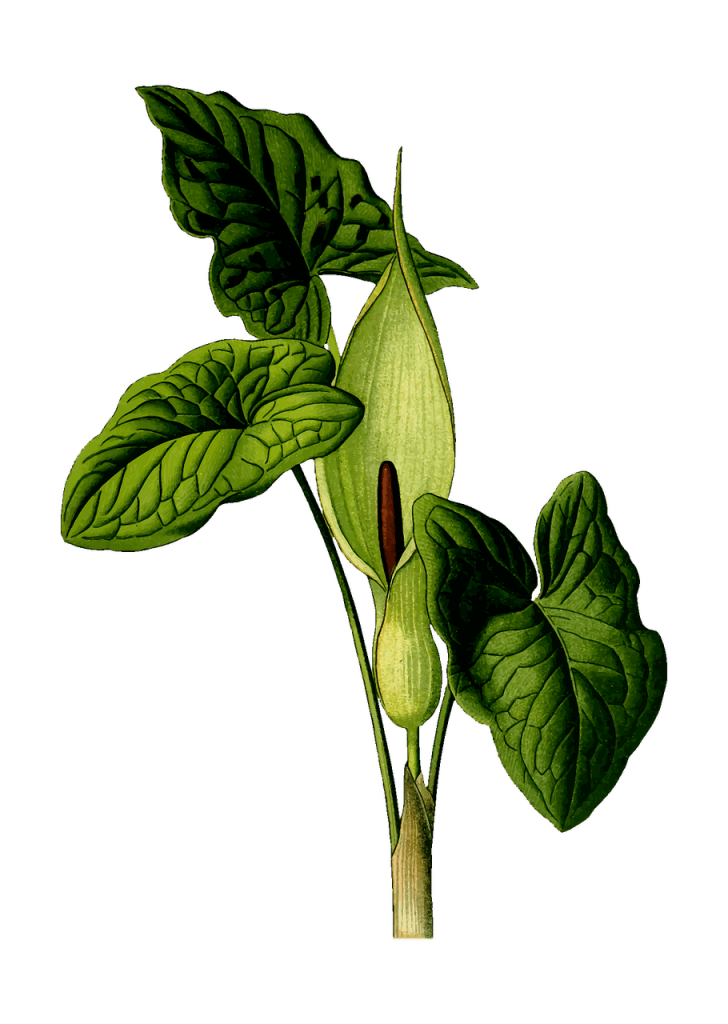
Comúnmente conocida como cucú-pinta, wake robin, arum salvaje.
Todas las partes de la planta pueden producir reacciones alérgicas.
Las bayas de color rojo brillante contienen oxalatos de saponinas y pueden causar irritación de la piel, la boca y la garganta, lo que provoca hinchazón, dolor de quemazón, dificultades respiratorias y malestar estomacal.
It is one of the most common causes of plant poisoning.
Brugmansia
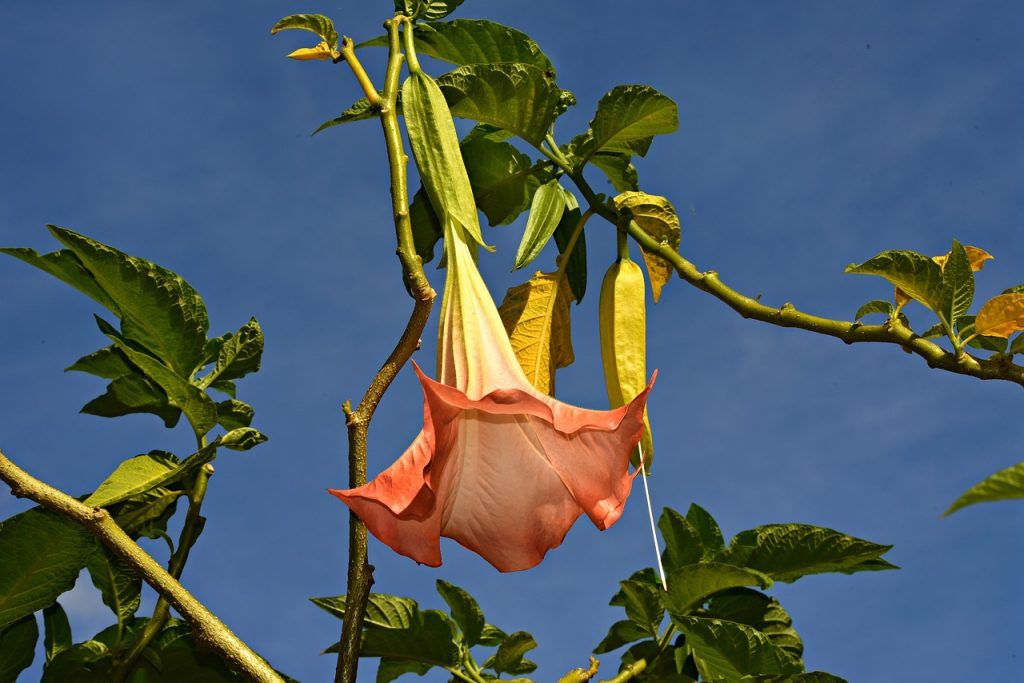
Commonly known as angel’s trumpet. It is a very poisonous plant.
All parts of all plants in this genus contain the tropane alkaloids scopolamine and atropine; they are often deadly.
These plants are closely related to members of the Datura genus, which contain the same deadly alkaloids, and were once lumped together.
Effects of ingestion may include loss of connection with reality and hallucinations.
An unfortunate case of a young man amputating himself with pruning shears after intentionally ingesting Brugmansia tea, boiled with only two flowers, has been reported in the neuroscientific literature.

![Photo of 23 Resistant Outdoor Plants: [List, Characteristics and Care]](https://www.complete-gardening.com/wp-content/uploads/2022/08/23-resistant-outdoor-plants-list-characteristics-and-care-390x220.jpg)
